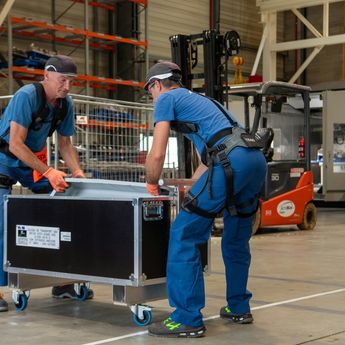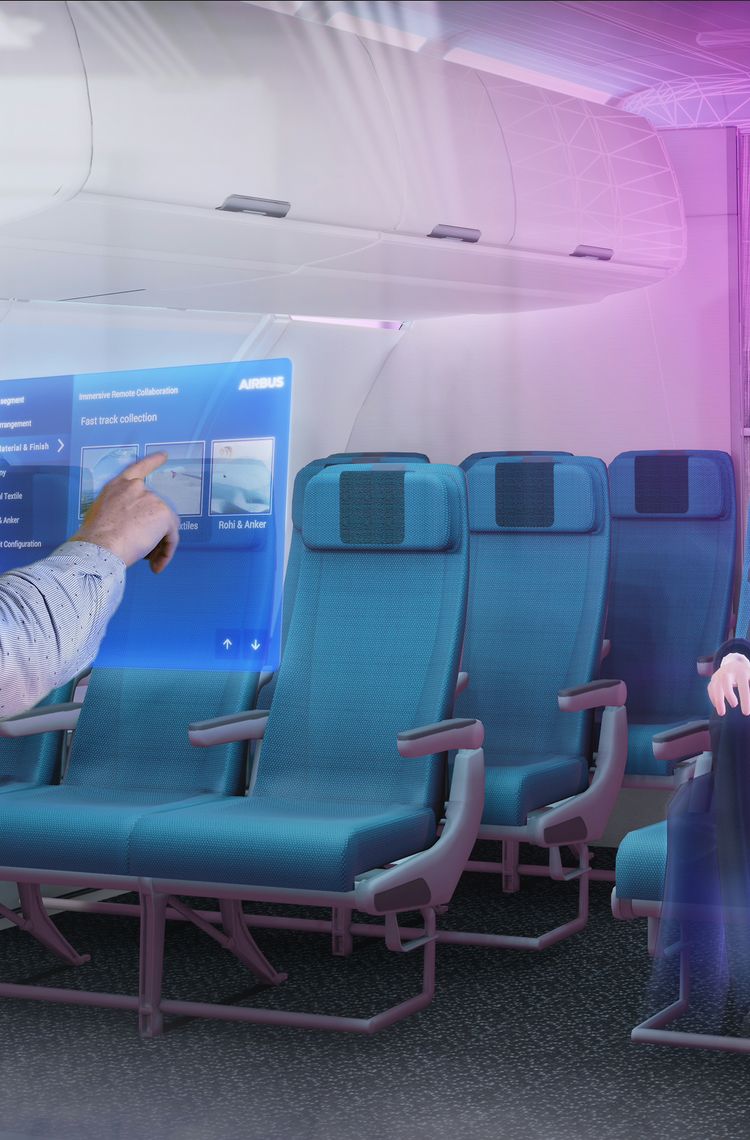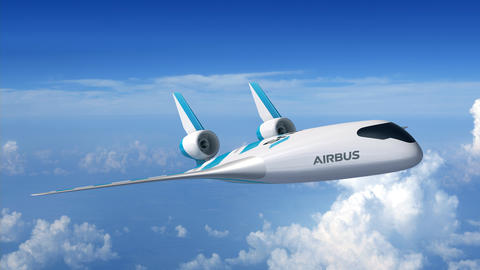Delivering thousands of commercial aircraft, a large number of helicopters and new space and defence solutions over the coming years is a huge challenge for Airbus. To help get there, the company intends to make extensive use of mixed reality. Let’s see what mixed reality is and how it is implemented at Airbus.
What is mixed reality?
Currently under development at Airbus, mixed reality brings together technologies that modify our perception of reality. The most well-known applications are augmented reality, a representation of the real world to which 3D digital information is added; and virtual reality, a totally immersive digital environment. To access both, users need a helmet or special glasses.
What are its main benefits?
Mixed reality helps to improve quality, safety and security. Operators are better at getting things ‘right first time’ and reducing lead times with the right information in front of them, whether via a hard-hat mounted screen or using goggles. In the aerospace industry, improving quality means increasing safety and reducing production time.
What’s Airbus’ background?
Digital developments are nothing new for Airbus. Already back in the early 2000s, our teams had grasped the potential of virtual reality in immersive environments for applications linked to parts design.
Then, over the last five years, Airbus has taken further major steps towards digitisation, transforming operations and services across all platforms. Data continuity and the creation of a common digital environment help us to interact seamlessly, from the creation to operation of our products, between different in-house skills and professions, as well as with our partners and customers in the wider world. The emergence of augmented reality solutions and equipment that give operators and engineers a more advanced, hands-free experience directly in their workplace has only accelerated the pace.
What’s the current situation at Airbus?
Airbus is now working with the best technologies available on the market, and in partnership with the most advanced players in the sector, such as Unity, to develop and implement these technologies in-house. For all Airbus platforms there are more and more use cases and proofs of concept, from design and training to manufacturing and maintenance of our products and associated services.
Mixed reality: collaboration into a new dimension
The 2023 Paris Air Show is an opportunity for Airbus to demonstrate the potential of mixed reality, which brings together virtual reality and augmented reality technologies. Airbus is now taking collaboration into a new dimension by introducing a first-in-the-industry concept based on mixed reality technologies for the Cabin Customisation and Design of the A320 Family.
Immersive Remote Collaboration Concept
Taking collaboration into a new dimension. Airbus is introducing a mixed reality concept for A320 Family cabin customisation and design
“Innovation is in easyJet’s DNA which is why we are always interested to see where technology can play a role in driving efficiency or improving our customer experience. The potential of augmented reality technology is significant and could range from cabin improvements to more efficient engineering troubleshooting. We look forward to working with Airbus to develop this further in the future”, confirmed Shane Lord, Director of Strategy and Fleet at Easyjet
What are our main projects and use cases in the conception phase?
Virtual reality is mainly used in the design phase whereas augmented reality is mainly applied during product assembly. However, that use is widening to Engineering. Initiated by Airbus Helicopters on the Super Puma, and extended for system understanding for customers by the Brisbane team (Airbus Australia Pacific), augmented reality went on to be used for A350 cabin mock-ups in Hamburg. It is also contributing to tooling integration tests at the Mirabel site in Canada.
What are our main projects and use cases as far as production is concerned?
In manufacturing, augmented reality glasses help operators to carry out complex or labour-intensive tasks while keeping their hands free. It helps operators to handle heavy parts while having all the information they need right in front of them.
At Airbus’ Getafe plant, where A330s are converted to MRTTs (Multi Role Tanker Transport), since 2019 mixed reality has been used to complete 70% of work orders, mainly for electrical and hydraulic installations. Building on the benefits for operators, the project is now being extended to the A400M and C295 programmes, with greater integration into the information systems.
Airbus Commercial Aircraft is also seeing a growing number of initiatives. An international project uses Microsoft's Hololens 2 (validated for industrial use at Airbus), whose semi-transparent screen allows operators to see a holographic representation of the task in hand. They can also document their activities directly via the installed software. By virtually pressing a button, the system knows that a work step has been completed.
Airbus has put in place an approach that enables an application to be rapidly adapted and deployed in a different user context. For example, the first application to be industrialised will help with the drilling and fitting of brackets at the Getafe, Saint-Eloi and Broughton sites, while in Hamburg a new adaptation of the application will help with quality control activities.
The number of ideas for use continues to grow. The teams with expertise in augmented reality are working on implementing the visualisation of cable harnesses in a cabin that has already been installed, checking supports, installing maintenance labels on wings or checking that they have been glued in place.
In fact, mixed reality continues to take its place in increasingly varied fields. At Airbus, mixed reality is more than ever a reality.
Read more Innovation news
Continue Reading

Expanding 5G connectivity with the Airbus UpNext SpaceRAN demonstrator
Web Story
Innovation
The Airbus UpNext SpaceRAN demonstrator aims to explore the capabilities of a standardised 5G non-terrestrial network on two different platforms.
Driving innovation at Airbus Helicopters
Web Story
Helicopters

Airbus and partners complete successful wake energy retrieval trials
Press Release
Innovation

Combating information warfare: How Airbus is helping win the fight for the truth
Web Story
Defence

Powering production and protecting people with exoskeletons
Web Story
Innovation

